On the verge of a revolution in space
In the middle of the XNUMXth century, mankind was fascinated by space. Launch of the first satellite, Gagarin's flight, spacewalk, landing on the moon (let's make a reservation right away, the author considers the denial of the visit by the Americans to the Moon as one of the most severe forms of obscurantism, akin to the denial of HIV, vaccinations and other nonsense generated by supporters of the "flat earth") - it seemed a little more - and we will fly to the stars, especially since ambitious interplanetary spacecraft projects really existed. And as bases on the moon, flights to Mars - it was something that was taken for granted.
But priorities have changed. The technologies of the last century, although they made it possible to implement all of the above, were extremely expensive. Expansion into space based on the technologies of the last century would require a reorientation of all economies of the leading countries of the world to solve this problem.
Intensive space exploration requires the solution of two basic tasks: the first is to ensure the possibility of launching massive bulky cargo into orbit, and the second is to reduce the cost of launching into orbit per one kilogram of payload (PN).
If mankind coped with the first task relatively well, then with the second - everything turned out to be much more complicated.
Long journey into space (and very expensive)
From the very beginning, launch vehicles (LV) were disposable. XNUMXth century technology did not allow the creation of a reusable launch vehicle. It seems incredible when hundreds of millions or billions of rubles / dollars burn up in the atmosphere or crash on the surface.
Let's imagine that the ships would be built only for one exit to the sea, and after that they would be immediately burned. In this case, would the era of great geographical discoveries come? Would the North American continent be colonized?
Hardly. Most likely, humanity would have lived as isolated centers of civilization.
The possibility of launching large and super-heavy cargoes into low reference orbit (LEO) was implemented in the American monstrous super-heavy launch vehicle Saturn-5. It was this rocket, capable of carrying 141 tons of PN to LEO, that allowed the United States to become the leaders in the space race at that time, delivering American astronauts to the moon.
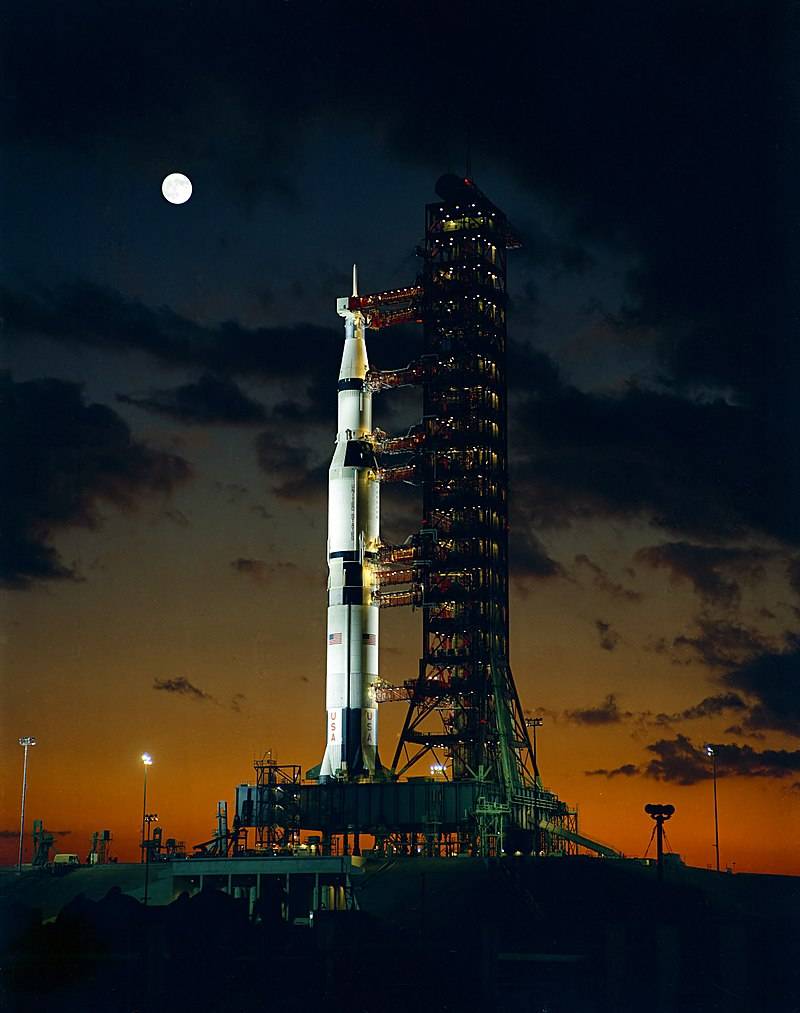
The Soviet Union lost the race for the moon because it could not create a super-heavy launch vehicle comparable to Saturn-5.
And the USSR could not create a super-heavy launch vehicle due to the lack of powerful rocket engines. Because of this, 1 NK-30 engines were installed at the first stage of the Soviet super-heavy five-stage LV N-33. Considering the absence of the possibility of computer diagnostics and synchronization of engine operation at that time, as well as the fact that, due to a lack of time and funding, ground dynamic and fire bench tests of the entire LV or the first stage assembly were not carried out, all test launches of the LV N-1 ended in failure at the stage of the first stage.
An attempt to radically reduce the cost of launching a spacecraft into orbit was the American Space Shuttle program.
In the Space Shuttle's reusable transport spacecraft (MTKK), two out of three components were returned - solid-fuel boosters by parachute splashed down into the ocean and, after checking and refueling, could be reused, and the space plane - a shuttle, landed on the runway according to the airplane scheme. In the atmosphere, only a tank for liquid hydrogen and oxygen was burned, the fuel from which was used by the shuttle's engines.
The Space Shuttle system cannot be classified as a super-heavy launch vehicle - the maximum weight of the cargo it put into low reference orbit (LEO) was less than 30 tons, which is comparable to the payload performance of the Russian Proton launch vehicle.
The Soviet Union responded with the Energia-Buran program.
Despite the external similarity of the Space Shuttle and the Energia-Buran system, they had key differences. If in the Space Shuttle, the launch into orbit was carried out by two reusable solid-propellant boosters and the spacecraft itself, then in the Soviet project Buran was a passive load of the Energia launch vehicle. The Energia launch vehicle itself can rightfully be classified as a "superheavy" - it was capable of putting 100 tons into a low reference orbit, only 40 tons less than Saturn-5.
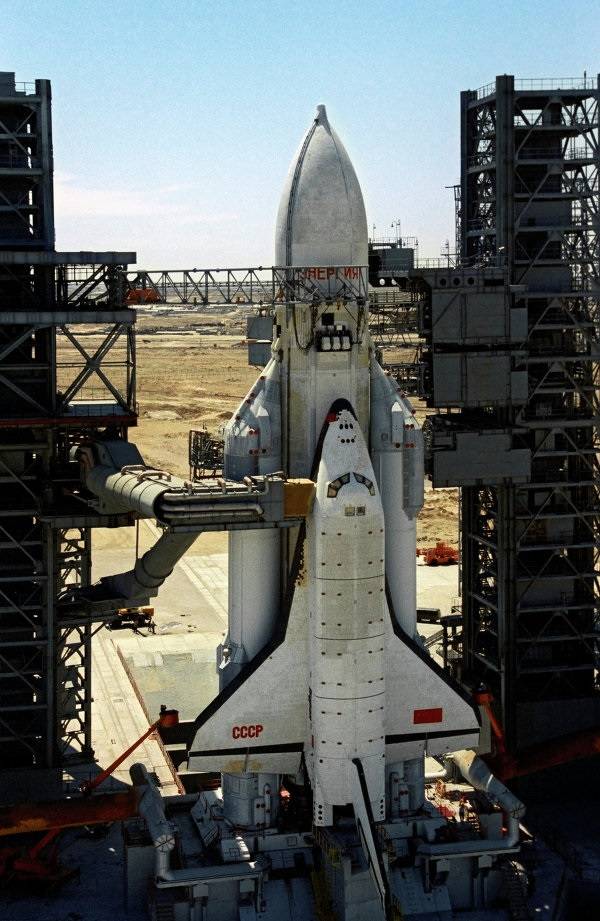
On the basis of the Energia launch vehicle, it was planned to create the Vulcan launch vehicle with an increased number of side blocks to 8 pieces, capable of delivering 175-200 tons of payload to LEO, which would make it possible to carry out flights to the Moon and Mars.
However, the most interesting development can be called the "Energy II" - "Hurricane" project, in which all elements were to be reusable, including the orbital spaceplane, the central block of the second stage and the side blocks of the first stage. The collapse of the USSR did not allow this, no doubt, an interesting project to be realized.
For all its epic character, both programs were curtailed: one - because of the collapse of the USSR, and the second - because of the high accident rate of "shuttles" that killed a dozen American astronauts. In addition, the Space Shuttle program did not meet expectations in terms of a radical reduction in the cost of launching a payload into orbit.
After the completion of the Energia-Buran program, mankind has no super-heavy launch vehicles left. Russia had no time for this, and the United States had significantly lost its space ambitions. To solve the current pressing tasks, the launch vehicles available to both countries were quite enough (except for the temporary lack of the United States' ability to independently launch astronauts into orbit).
The American aerospace agency NASA gradually carried out the design of a super-heavy launch vehicle to solve ambitious tasks: such as a flight to Mars or the construction of a base on the Moon. As part of the Constellation program, the Ares V super-heavy launch vehicle was developed. It was assumed that "Ares-5" will be able to bring 5 tons of payload to LEO, and deliver 188 tons of PN to the Moon.

In 2010, the Constellation program was closed. The developments on "Ares-5" were used in a new program for creating a super-heavy LV - SLS (Space Launch System). The super-heavy SLS launch vehicle in the basic version is supposed to deliver 95 tons of payload to LEO, and in the version with increased payload - up to 130 tons of payload. The SLS LV design uses engines and solid-propellant boosters created as part of the Space Shuttle program.
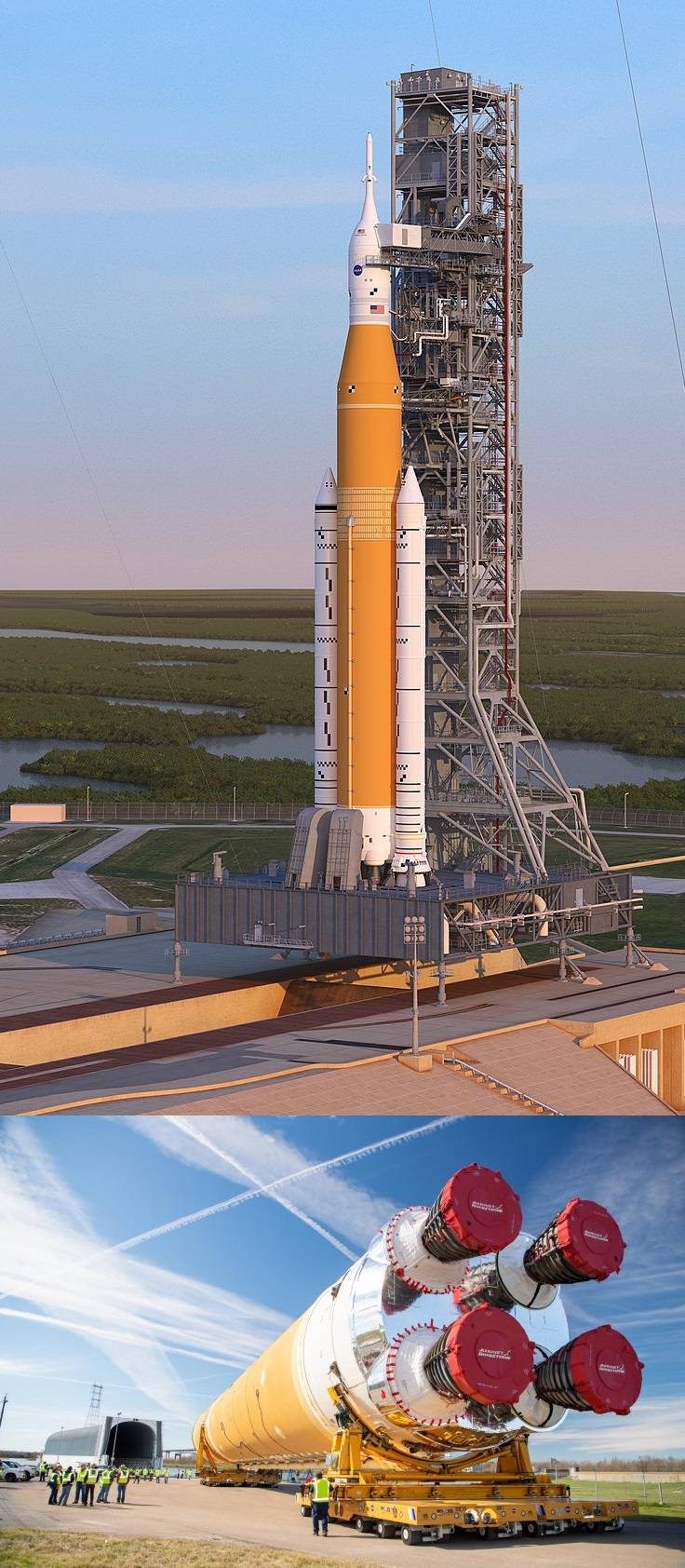
In fact, it will be some kind of modern reincarnation of "Saturn-5", similar to it both in characteristics and in cost. Despite the fact that the SLS program, most likely, will still be completed, it will not revolutionize either the American or world astronautics.
This is a deliberately dead-end project.
The same fate awaits the Russian project of the Yenisei / Don super-heavy launch vehicle, if it is built on the basis of “traditional” solutions used in space technology.
In general, up to a certain point, the situation in the United States and in Russia was relatively similar: neither from NASA, nor from Roskosmos, we would hardly have seen any breakthrough solutions in terms of placing the payload into orbit. Nothing new was seen in other countries either. The space industry has become very conservative.
Private companies have changed everything, and it is quite natural that this happened in the United States, where the most comfortable conditions for business have been created.
Private space
Of course, first of all we are talking about the SpaceX company of Elon Musk. As soon as he was not called - a swindler, "successful manager", "Ostap Petrikovich Mask" and so on and so forth. The author has read on one of the resources a pseudo-scientific article about why the Falcon-9 launch vehicle will not fly: its body is not the same, too thin, and the engines are not the same, in general, there are a million reasons why "no". Such assessments, by the way, were expressed not only by independent analysts, but also by officials, heads of Russian state structures and enterprises.
Musk was accused of the fact that he himself did not develop anything (and he had to make all the design documentation himself, and then assemble the launch vehicle on his own?), And that SpaceX received a lot of information and materials on other projects from NASA (and SpaceX had to do everything from scratch, as if space programs did not exist in the United States before it?).
One way or another, but the Falcon-9 launch vehicle has taken place, it flies into space with an enviable regularity, the spent first stages land with the same regularity, one of which has already flown 10 (!) Times. Roscosmos has lost most of the market for launching payloads into orbit, and after the creation of SpaceX of the reusable manned spacecraft Crew Dragon (Dragon V2) and the market for delivering American astronauts to orbit.
But SpaceX also has a Falcon Heavy rocket capable of delivering over 63 tons to LEO. It is currently the heaviest and most payload launch vehicle in the world. Its first stage and side boosters are also reusable.
Another American billionaire, Jeff Bezos, breathes in the back of SpaceX's head. Of course, while its successes are much more modest, but there are still achievements. First of all, this is the creation of a new methane-oxygen engine BE-4, which will be used in the New Glenn launch vehicle and in the Vulcan launch vehicle (which is to replace the Atlas-5 launch vehicle). Considering that Atlas-5 now flies on Russian RD-180 engines, after the appearance of BE-4, Roscosmos will lose another sales market.
In the United States and in other countries, there are hundreds of start-ups to create launch vehicles and other types of aircraft for launching payloads into orbit, start-ups to create satellites and spacecraft for various purposes, industrial technologies for space, orbital tourism, and so on and so forth.
What will all this lead to?
To the fact that the space market will expand rapidly, and competition in the market for placing a payload into orbit will lead to a significant reduction in the cost of its removal from the calculation per kilogram.
The cost of the output of 1 kg of payload to LEO by the Space Shuttle system or the Delta-4 rocket is about $ 20. Russia's Proton launch vehicles are capable of delivering a payload to LEO at a cost of less than $ 000 per kilogram, but these missiles run on the highly toxic asymmetric dimethylhydrazine and are currently out of production. Cheap, developed in the USSR, Russian-Ukrainian Zenits are also a thing of the past.
The Falcon-9 launch vehicle, provided that the return first stage is used, can launch a payload into a low reference orbit at a cost of less than $ 2 per kilogram. According to Elon Musk, Falcon-000 can potentially reduce the cost of launching a payload to $ 9-500 per kilogram.
One might ask, why is it now so much more expensive for customers to take out the payload?
First, the cost is determined not only by the cost of launching, but also by market conditions - the prices of competitors. What capitalist would give up extra profit? It is profitable to be slightly lower than competitors, gradually capturing the market than to dumping, without earning anything, especially since in such a specific critical industry as the space launch market, controlling structures will in any case support several suppliers, even if one has prices several times higher than the competitor.
It can be assumed that SpaceX's prices will only be prompted by the emergence of competitors represented by Blue Origin with its New Glenn launch vehicle or other companies and countries that will create means for launching payloads with a low launch cost.
However, most of the start-ups and promising projects relate to the launch of a payload weighing hundreds, at most a thousand kilograms, into orbit. This will not revolutionize space - building something large will require heavy and super-heavy reusable launch vehicles with a low cost of launching a payload into orbit. And here, as we have seen above, everything is sad.
Everything, except for the most important project of SpaceX - a fully reusable Starship spacecraft with a fully reusable Super Heavy first stage.
Reusable super heavy
The difference between Starship (hereinafter referred to as Starship as a combination of Starship + Super Heavy) from all other launch vehicles is that both stages are reusable. At the same time, the Starship's payload to a low reference orbit should be 100 tons, that is, it is a full-fledged super-heavy rocket. For Starship, SpaceX has developed new, unique, closed-cycle Raptor methane-oxygen engines with full gasification of components.
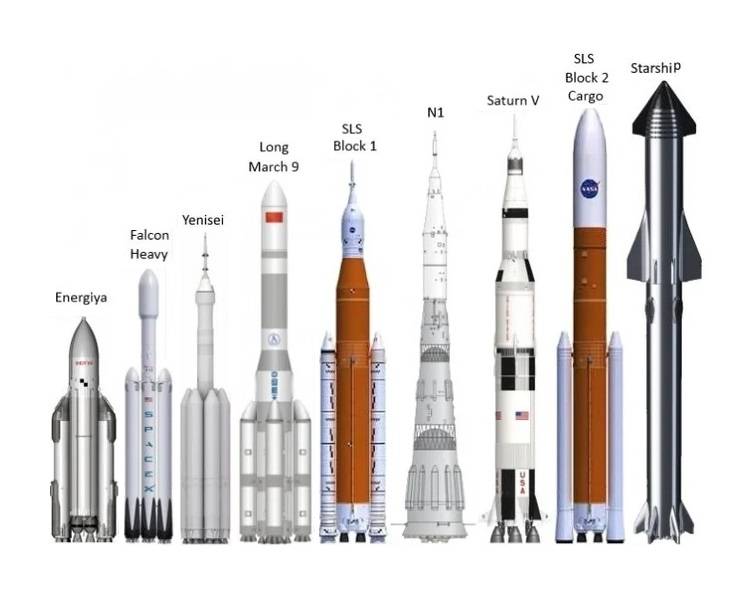
SpaceX plans to replace all of its launch vehicles with the Starship, including the highly successful Falcon 9. Usually launching a super-heavy rocket is extremely expensive - on the order of one billion dollars. To keep the cost of launching low, SpaceX plans to use both stages many times - 100 launches each, and possibly more. In this case, the cost will drop by almost two orders of magnitude - up to ten million dollars per launch. Taking into account the maximum load of 100 tons, we will get the cost of bringing the payload to LEO at the level of about 100 (!) Dollars per kilogram.
Of course, the returned stages will require maintenance, engine replacements after 50 starts, refueling, ground services will need to be paid, but the Starship itself will most likely cost less than a billion dollars, and its production and maintenance technologies will be continuously improved as experience is gained. by SpaceX.
In fact, Elon Musk states that Starship can potentially achieve a payload launch cost of about $ 10 per kilogram with a total launch cost of $ 1 million, and the cost of delivering cargo to the Moon will be about $ 1,5-20 per kilogram. but this requires the Starship to be launched weekly.
Where to get such volumes?
Even the military simply does not have such a large amount of payload, that there is already civil space - the development of the market will take decades.
Colonization of Mars?
It is hardly possible to talk about this seriously.
Colonization of the Moon?
Closer, Starship may well sink the SLS and send the Americans to the moon a second time. But these are dozens of launches, not hundreds or thousands.
However, SpaceX has a business plan far more real than sending colonists to Mars - using Starship to transport passengers intercontinentally. When flying from New York to Tokyo through Earth's orbit, the flight time will be about 90 minutes. At the same time, SpaceX plans to ensure operational reliability at the level of modern large airliners, and the cost of the flight - at the level of the cost of a transcontinental flight in business class.
Cargoes can be delivered in the same way. For example, the US military has already become interested in this opportunity. It is planned to deliver 80 tons of cargo in one flight, which is comparable to the capabilities of the C-17 Globemaster III transport aircraft.
In the aggregate: the transportation of passengers and cargo, the delivery of American astronauts to the moon, and possibly to more distant objects of the solar system, the withdrawal of commercial spacecraft, space tourism, and so on and so forth, and the like - SpaceX may well provide a reduction in the cost of withdrawing the payload, although would be up to the level of $ 100 per kilogram.
In this case, Starship will usher in a new era in space exploration and beyond.
Prospects and implications
Starship is viewed with some suspicion at the moment. It seems that everything is beautiful on paper, and SpaceX's experience speaks for itself, but somehow everything is too rosy?
Sometimes there is a feeling that the potential of this system just does not fit into the head of the leadership of the US armed forces, NASA management, owners and managers of enterprises in various industries. For too long, launching even a small payload into space meant multi-million dollar costs.
The question is, what happens when $ 100 per kilogram becomes reality?
When literate people in the US Department of Defense understand that it is faster and cheaper to throw a simulated tank into orbit than to transport it by a military transport plane aviation from the American continent to Europe, what conclusions will they come to?
No, we will not see the Abrams on the Moon, but the tank is not the target, it is just a way of delivering the projectile to the enemy. What if it's easier to get this projectile directly from orbit? How quickly will the United States withdraw from the Peaceful Outer Space Treaty if it gains a strategic advantage in it (in space)? How quickly will the US military begin to migrate into orbit?
Moreover, even the existing capabilities for placing payloads into orbit in the form of Falcon-9 and Falcon Heavy, combined with technologies for mass satellite construction, will be enough for LEO to be jammed with reconnaissance, command and communication satellites, leading to the fact that the United States will monitor the planet's surface 24/365. Forget about large surface forces, military groupings, mobile ground-based missile systems - all these will be just targets for weapons long range with flight trajectory correction.
The success of Starship will add a space strike echelon to this set, where the target will be hit from space within a few tens of minutes after receiving the request. No political leader in the world can feel confident knowing that at any moment an inevitable tungsten shower may fall from space.
At a price of $ 100 per kilogram, everyone who is not too lazy - pharmaceutical companies, metallurgical, mining companies - will climb into space. We'll talk more about space economics later. If possible, cheaply launching and removing cargo from orbit, space will become the new Klondike. What can we say about 10 dollars per kilogram ...
It is quite possible that right now we are witnessing a historical event that could become a turning point in the development of mankind.
Can this process stop?
Maybe the story is unpredictable. Human greed, stupidity or just an accident - a chain of failures, can bury any, the most successful undertakings. A couple of major accidents Starship with the death of hundreds of people are enough, and the process of space exploration can again be severely slowed down, as it was already in the XX century.
In the event of a unilateral advantage in space, the United States will begin to pursue a much more aggressive policy than it is now. In the absence of an opportunity to ensure parity in space, we may well slide down to the level of North Korea, sitting on a "nuclear suitcase" and threatening to undermine ourselves, neighbors and everyone else in case of anything (which, apparently, for strange reasons, even appeals to some).
In this regard, it is necessary to pay increased attention to the space industry, the state of which at the moment does not cause any optimism.
Take, for example, the project of the super-heavy launch vehicle "Yenisei" / "Don" - it is enough to look at all the mutually exclusive statements of various leaders and departments on this project, and it becomes clear that no one, in principle, knows why it is being created, nor what it is. should eventually become. If this is the next "Angara", then the project can be closed now - there is no point in spending people's money on it.
At the same time, China is not sitting idly by.
In addition to developing traditional launch vehicles, they are actively studying and adopting the American experience, not hesitating to directly copy. All is fair in matters of national security.
On National Space Day, the Chinese Rocket Research Institute spoke about the project of a suborbital rocket system, which should deliver passengers from one point of the planet to another in less than one hour.
We can say that so far these are only drawings, but China has recently repeatedly proved its ability to catch up with leaders in various branches of science and industry.
It is also time for Russia to put aside confusion and vacillation in the space industry, clearly formulate goals and ensure their implementation by any means.
If China and Russia can compete with the United States in space at a new technological level, then low orbits will be just the beginning, and humanity will indeed enter a new era, which so far exists only in the pages of science fiction novels.
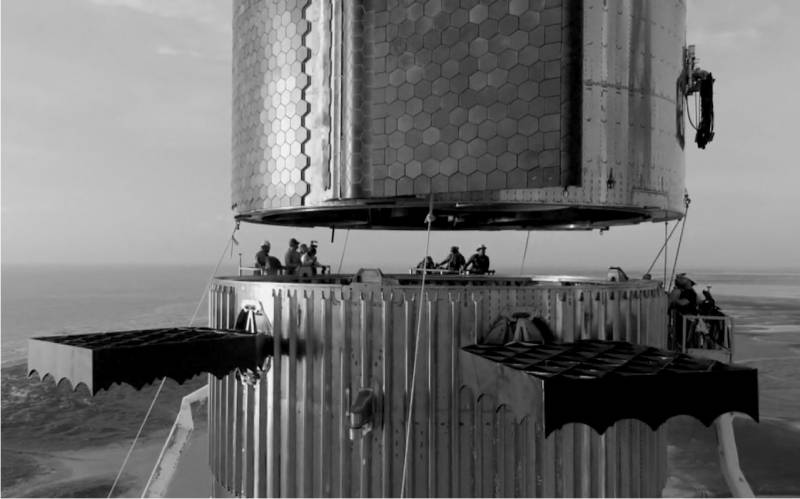
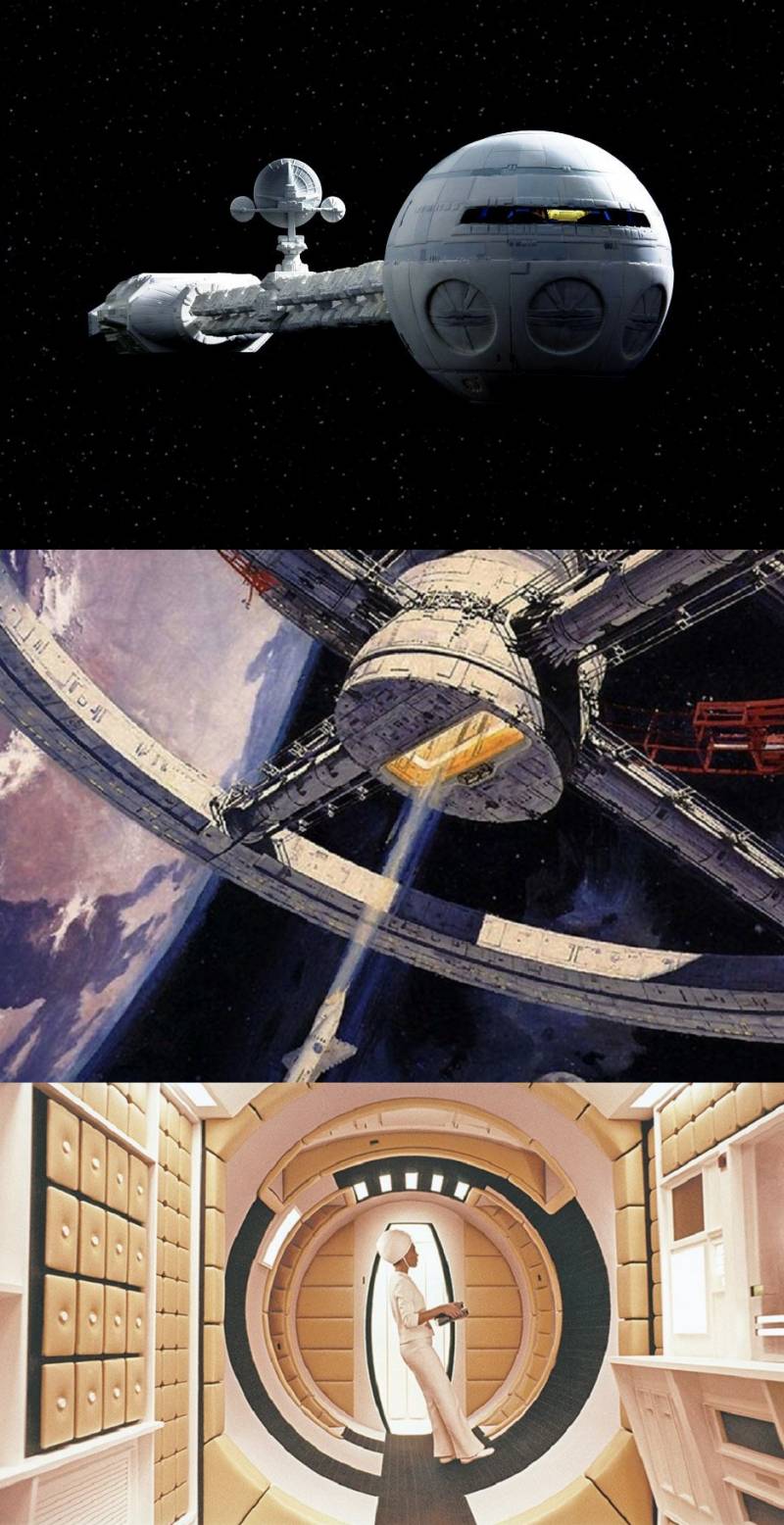

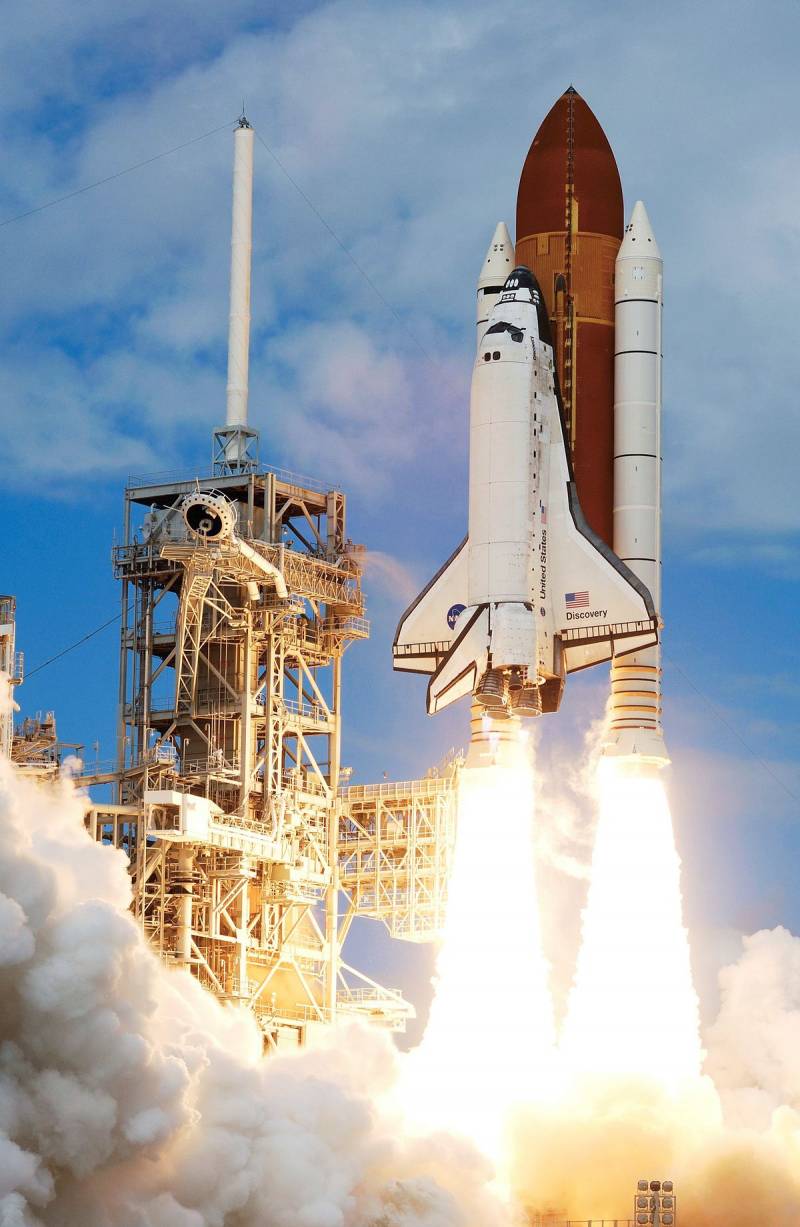
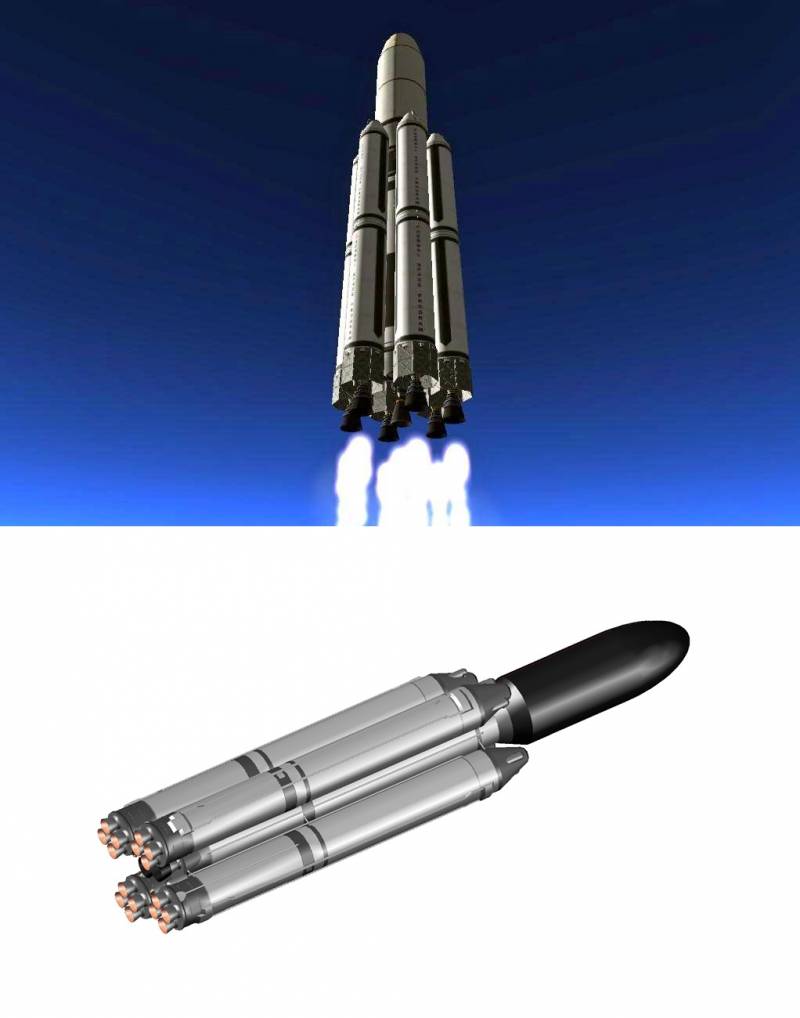
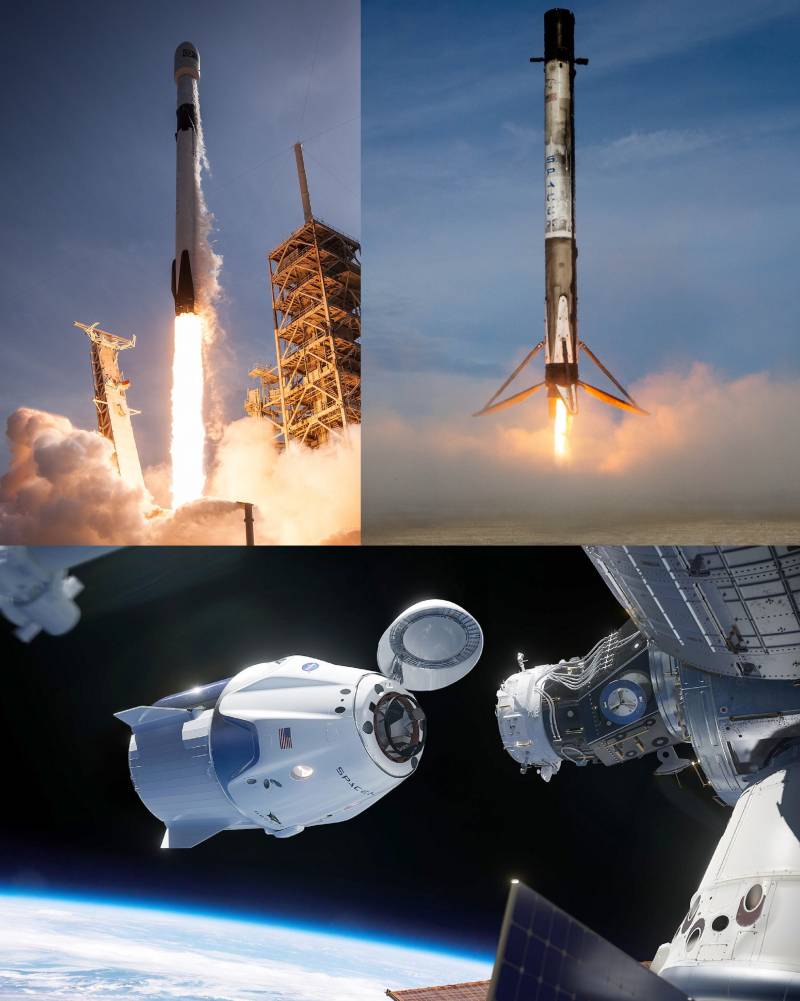

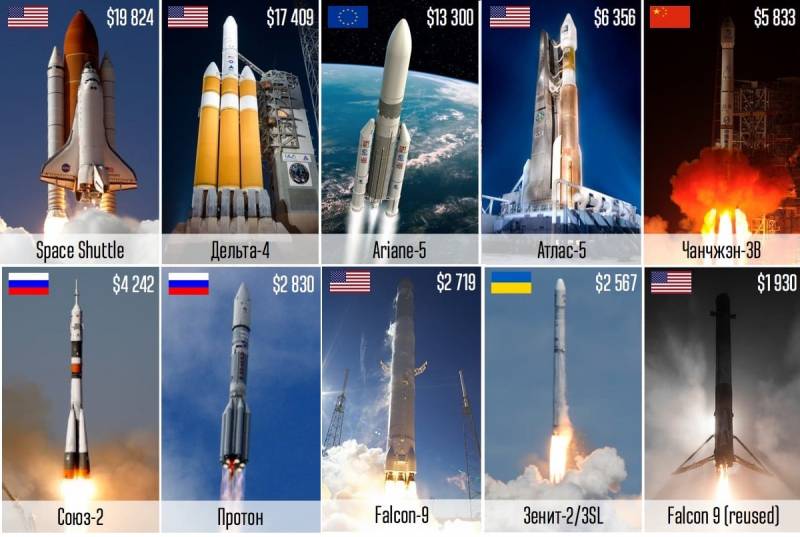
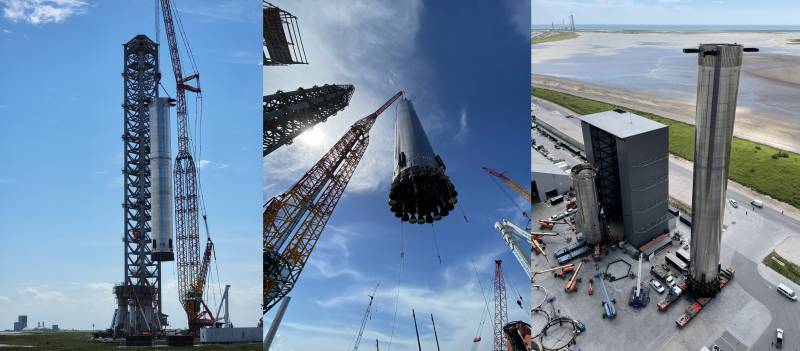
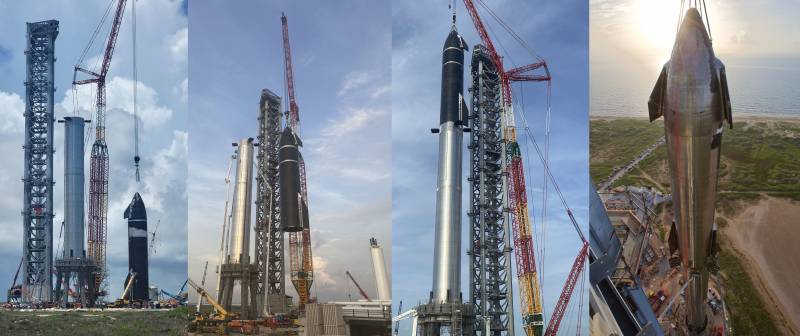
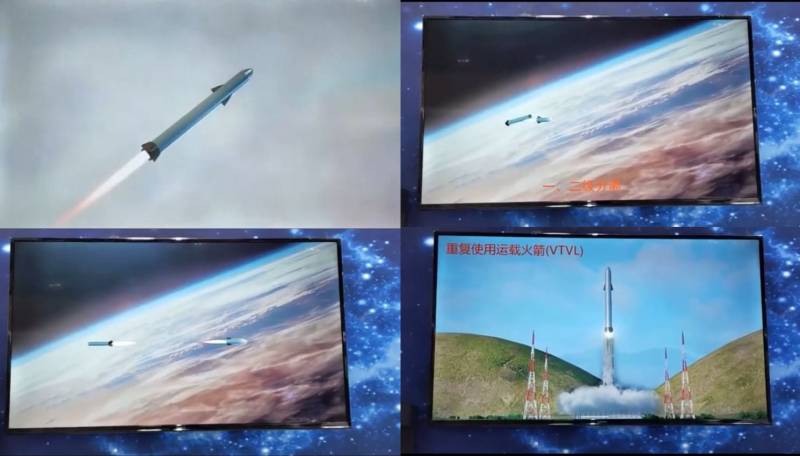
Information